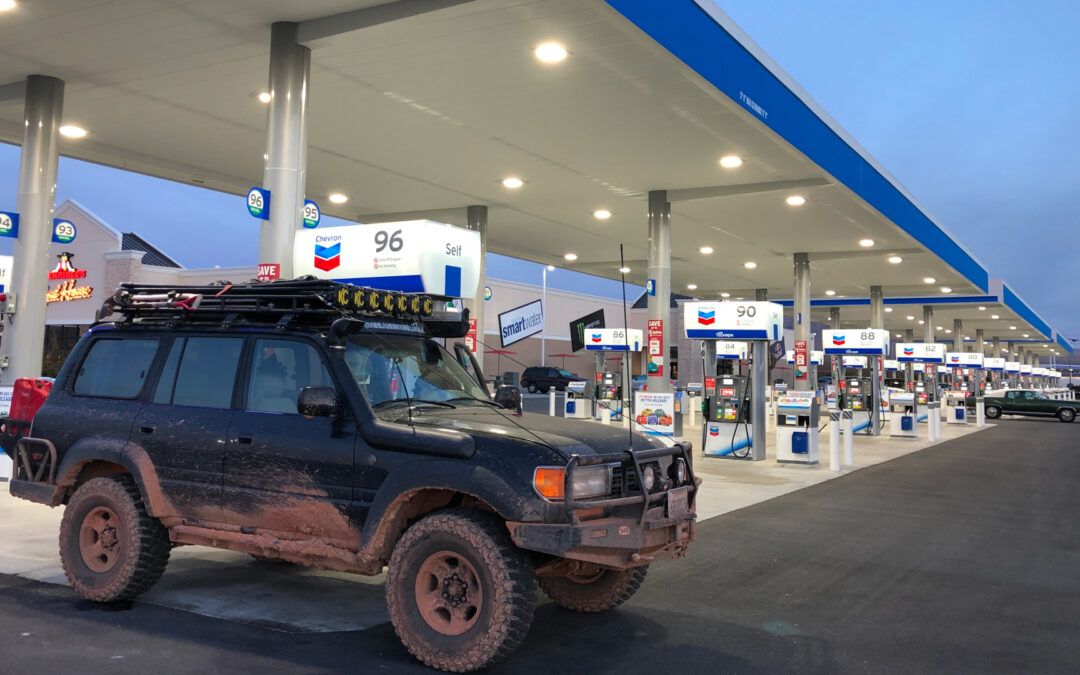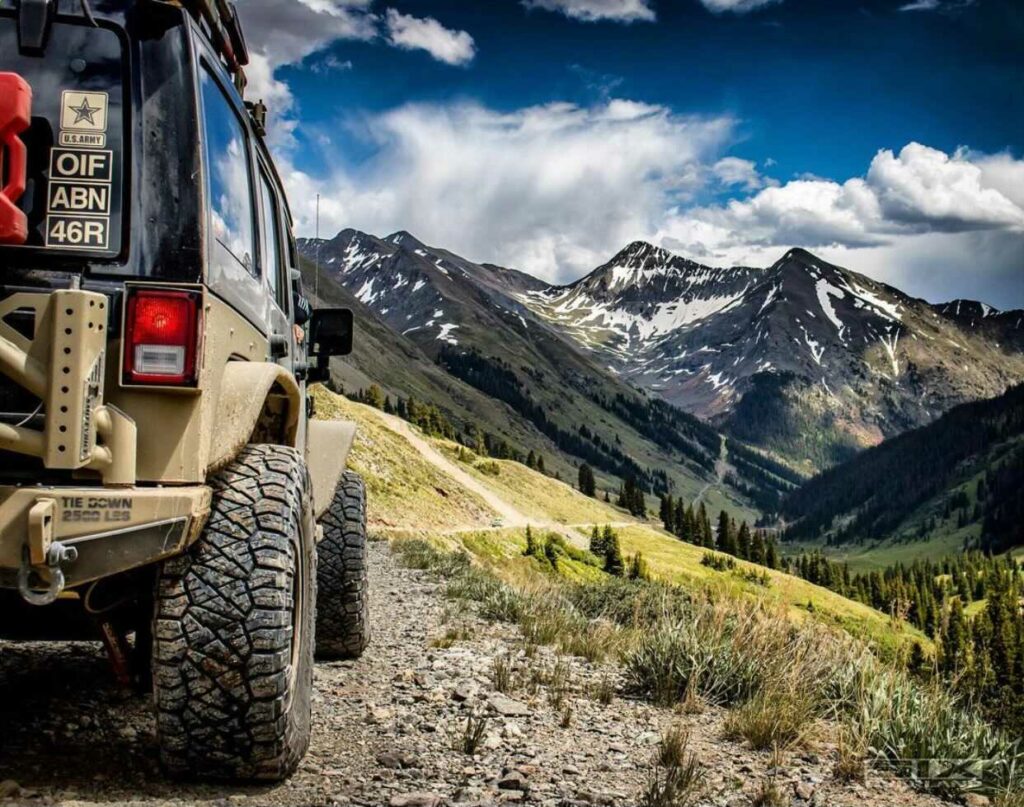Going off-road takes you on incredible adventures, from the Rubicon Trail in California to the Everglades in South Florida. You mainly focus on staying safe on rough terrain and having fun with nature surrounding you when off-roading. However, riders sometimes forget small details like fuel economy and its impact.
How can you optimize fuel efficiency in an overland vehicle? This guide outlines what you need to know while driving and before you leave the garage.
How Can You Optimize Fuel Efficiency While Driving?
Off-roading can require long trips to get to your destination. How can you ensure your fuel efficiency stays top-notch on the highway?
Careful Acceleration
While a fast start on the road is temping, rapid acceleration compromises your fuel efficiency. Your truck’s engine is already working hard to carry a heavy load, so quickly accelerating further strains the motor. You’re also putting unnecessary stress on the tires and transmission.
Instead, carefully accelerate after cranking the engine. You’ll optimize fuel efficiency because the truck can easily overcome drag and inertia. It also makes for safer trips because you have more time to react to the road before you.
Using the AC Wisely
Summer is an excellent time to go off-roading with the kids in the warm weather. However, some locations get hot in the summer, making you crank the air conditioning. While you need the AC to stay comfortable, you should use it wisely to ensure you don’t compromise your fuel mileage.
Start by using the recirculation mode in your truck. This setting recirculates the air inside your overland vehicle instead of drawing in air from the outside. Your truck will cool much faster and more efficiently than using fresh air.
Also, try using the AC only when driving at highway-level speeds. When moving slowly, your AC compressor creates more drag. Roll down the window to increase fuel economy, especially in stop-and-go traffic.
Limiting Idle Time
Fuel efficiency is at its worst when your overland vehicle isn’t going anywhere. Idle time burns gas unnecessarily, so limit it when you can.
Your truck may sit idle when taking a break or waiting for your friends to arrive. Sometimes, you’re stuck in the mud or rock crawling. Regardless, your vehicle burns more fuel than necessary. Turn off the engine and the air conditioner if it’s not too hot.
What Maintenance Helps Overland Truck Fuel Efficiency?
Manufacturers design overland trucks to last long, but your vehicle may become less efficient as parts wear. Here are a few maintenance tips for ensuring your overland truck’s fuel economy.
Changing the Air Filter
The air filter is one of the engine’s most important pieces. This component traps the dirt and debris from outside, and protects your engine from these contaminants. Considering the mud and sand you drive through, it’s a crucial component of your overland vehicle.
The air filter will become dirty over time and require a change. If not, you’ll have less airflow and your engine must work harder to overcome the restrictions. The last thing you want is an engine running rich. You should change your air filter at least once annually, but your overland vehicle may need a few inspections throughout the year.
Checking the Tire Pressure
Your engine is the biggest decider of your fuel mileage, but you should be aware of other components influencing your efficiency. For example, periodically check your tires’ pounds per square inch (psi). Underinflation can be bad news for your fuel economy because it increases your rolling resistance, forcing your engine to work harder.
Underinflation hurts your tires the longer your overland truck runs on them. The Department of Energy says you lose 0.2% of your fuel economy for every 1 psi below the average. Conversely, you can gain between 0.6% and 3% in your fuel mileage by properly inflating your tires.
Accidents can happen on the road, so prepare with the proper tools to care for your tires. You’ll need a tire pressure gauge, portable air compressor, tire plug kit and typical tire-changing tools.
Tire Alignment
Off-roading means driving over rocks and rough terrain. While this adventure is thrilling, you’ll likely harm your tire alignment over time. Overland vehicles have rigid suspensions, but off-roading will mess up alignment. Misaligned tires force your truck to work harder, thus burning fuel.
Aligning your tires improves fuel efficiency, so follow your manufacturer’s recommendations on how frequently you should do it. Most will say once every two or three years, but constant off-roading may require more trips to the mechanic.
Maintaining the Brakes
Another lesser-known factor in your fuel economy is the brake system. Each time you hit the brakes, you create friction to slow down your truck. This friction produces heat and resistance, thus making your vehicle work harder. Avoid hard braking and go easy on them to increase your safety and your brake’s longevity.
The last thing you need is to damage your brake system unnecessarily. Worn brake pads can tighten disc brakes, harming fuel economy and causing vehicle pull. Periodically check your lubricants and your brake pads to ensure everything works as it should.
What Prep Improves Your Efficiency?
Are you getting ready for an off-road excursion? If your journey requires a road trip, you can use these tips to improve fuel efficiency.
Route Planning
The best way to prepare your overland vehicle is to do route planning. Before heading out the door, find the most efficient route to get to your destination. These roads will have less traffic and reduce the distance traveled.
Thankfully, you don’t have to do the work yourself — intelligent technology is by your side in route-planning websites and applications. Modern global positioning systems (GPS) watch traffic and alert you if there are routes with less congestion. If you don’t have a GPS in your car, use your phone’s built-in GPS — even if your device is offline.
Become Roof Rack Aware
In motorsports, race teams aim to make their cars as aerodynamically efficient as possible by reducing drag. Even minor things can increase wind resistance and compromise your overland vehicle’s fuel mileage.
For example, you may put roof racks on your jeep, truck or SUV. Placing them on top makes your vehicle less efficient because you’ve disrupted the airflow. Be sure to load gear that is low to the roofline up front and then create as aerodynamic a gear height profile possible.
Reducing the Load
When you go off-road, your vacation could be multiple days or weeks long. You’ll need plenty of supplies to get through the trip. While these goods are necessary, you should know how heavy loads affect fuel mileage.
Adding extra weight to your vehicle makes it work harder than it’s accustomed to, burning more gas or diesel. Your fuel mileage decreases by about 2% for every 100 pounds of extra weight, so be careful when loading. Stick to the essentials and leave the rest at home. If you pack your truck efficiently, you’ll find the right balance of fuel efficiency and having enough goods for the road.
Also, be mindful of your towing. Load your truck evenly, and ensure you have the proper towing hitch and ball mount for your vehicle. Pushing your truck harder compromises fuel efficiency, so don’t exceed the automaker’s towing recommendations.
Getting the Most From Your Overland Vehicle
When thinking about off-roading, fuel economy might not be the first thing to come to mind. However, it’s a more significant factor than you think. Some off-road trails may have limited filling stations available in the area. Your fuel tank is essential to arriving at each destination safely, so follow these tips to maximize your fuel efficiency in the short and long run.
Author Bio
Jack Shaw is a seasoned automotive writer with over six years of experience. As the senior writer for Modded, he combines his passion for cars, trucks, and offroading with his expertise to deliver engaging content that resonates with automotive enthusiasts worldwide.


